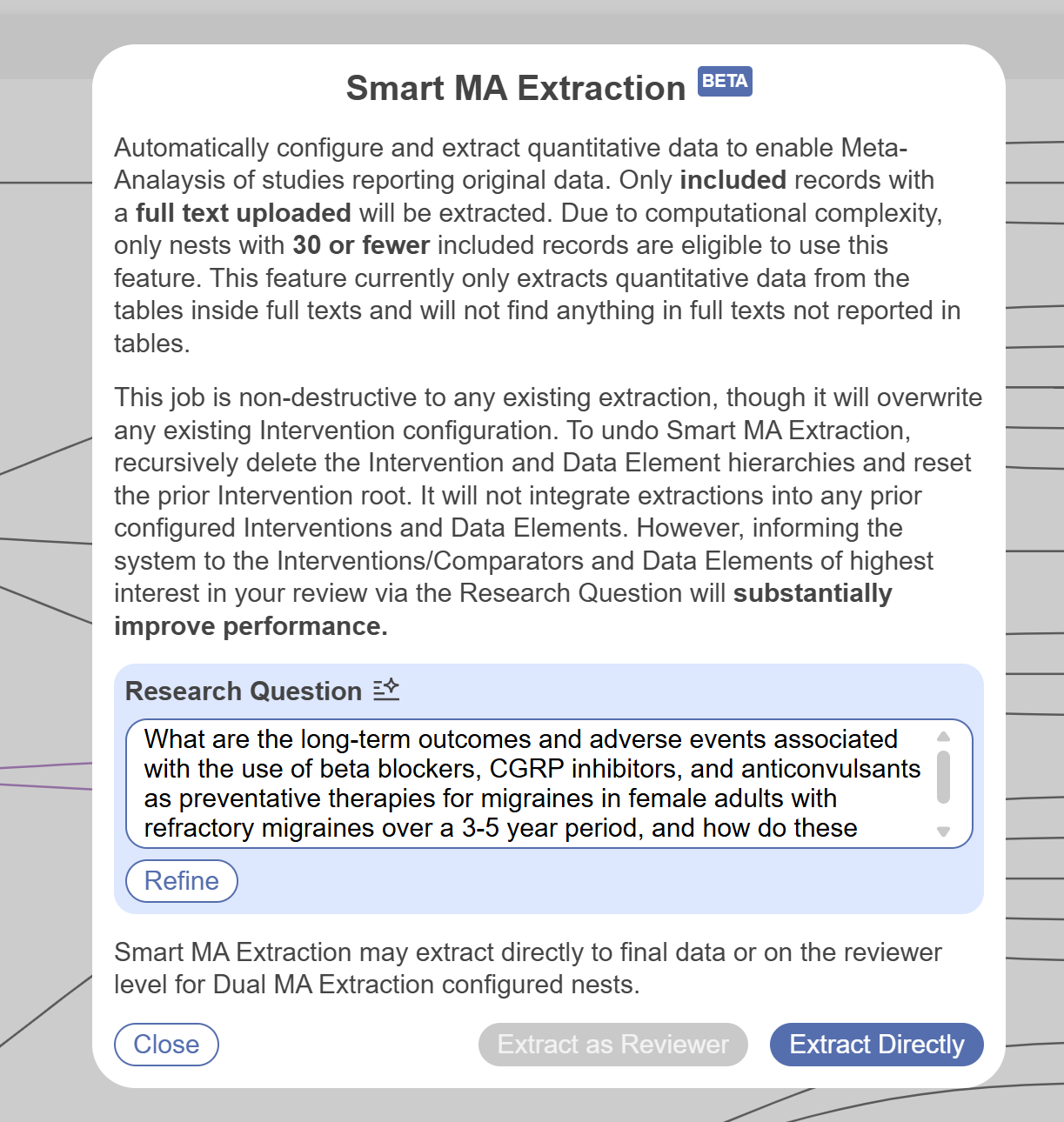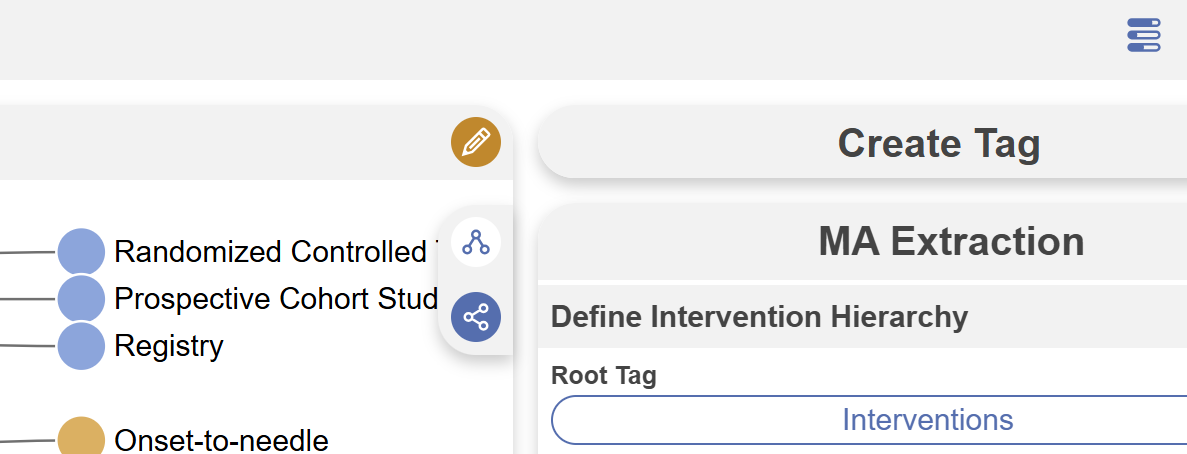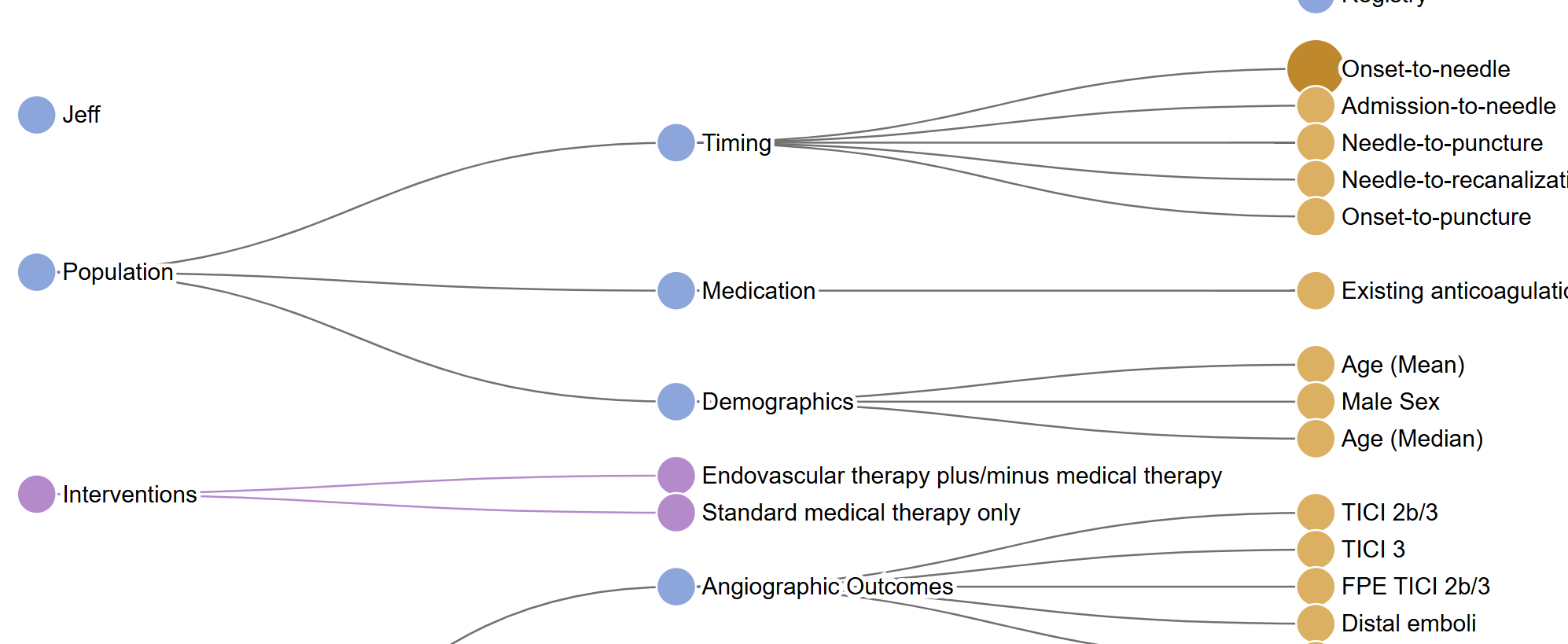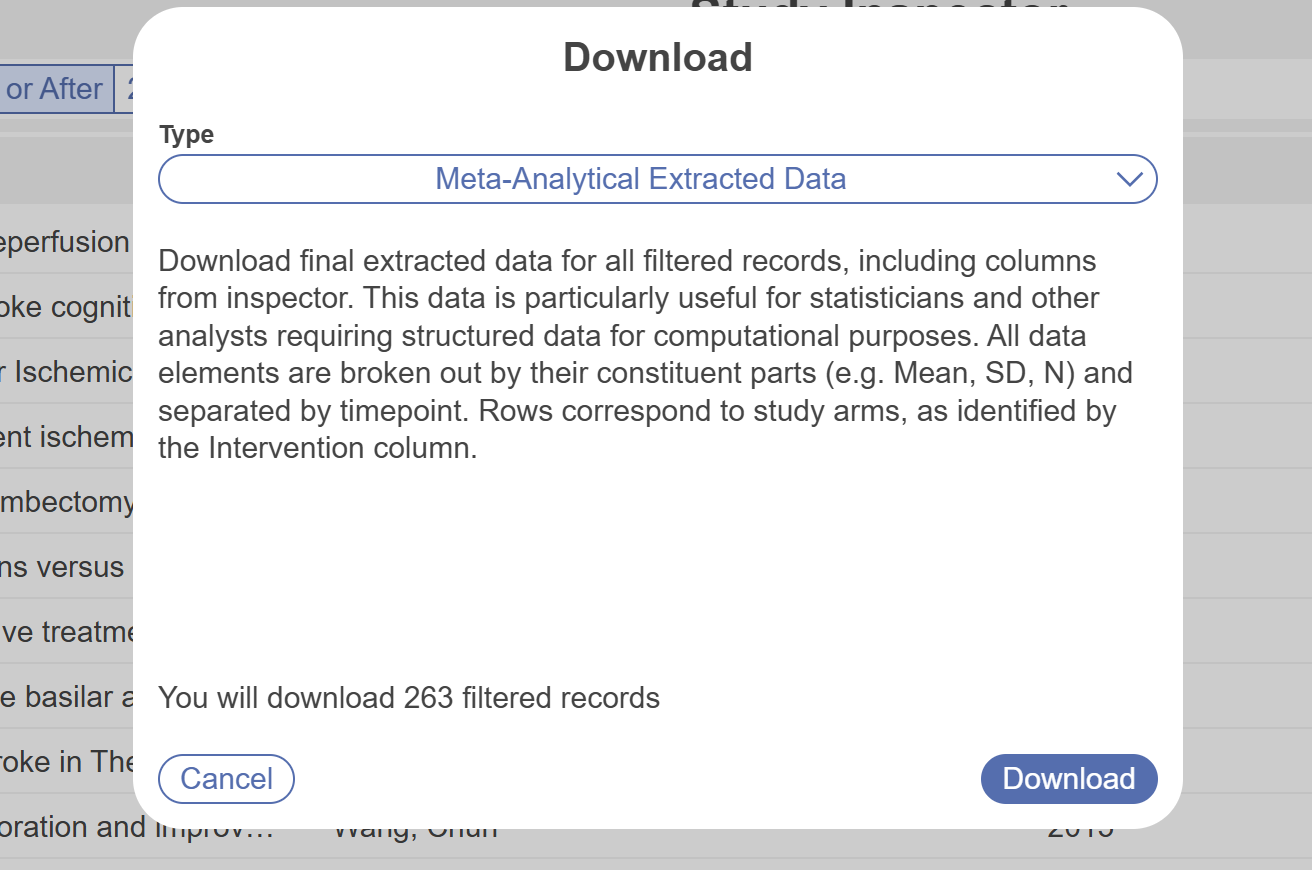After completing the tagging hierarchy within your project, you have the option to initiate Smart MA Extraction (SMAE)—a powerful feature designed to facilitate rapid-scope meta-analysis with minimal manual effort.
Leveraging Quantitative Synthesis, SMAE automatically extracts and harmonizes quantitative data from the tagged evidence. This structured data is then seamlessly integrated into pooled estimate models and Network Meta-Analyses (NMAs), enabling faster and more consistent generation of evidence-based insights.
Smart MA Extraction is especially useful for users seeking to quickly validate a research hypothesis or perform an exploratory meta-analysis without engaging in time-consuming manual data extraction.
Here is a video that explains the process:
Toggle on MA Extraction #
First, in Nest Settings, ensure Smart Tags are toggled on (it is on by default but to check) and toggle on Meta-analytical Extraction just below.

Once you have done so, MA Extraction will appear as an additional module in the left-hand menu.
Requirements for Smart MA Extraction #
Before beginning the Smart MA Extraction process, you must ensure:
- You have included studies in your nest
- If your nest has multiple rounds of screening, you must ensure studies are included at the Final Screening stage to be eligible for SMAE
- You have uploaded full texts for your included studies
- SMAE will not work on abstracts alone
- Full Texts must include tabular data; quantitative data will not be extracted from text alone
- You have fewer than 30 included studies
- At this stage of the feature, SMAE will only work effectively on <30 studies
Setting up Smart MA Extraction #
Navigate to the Configure MA Extraction module in the left-hand menu via the gear icon. This will open a space that looks similar to the Configure Tagging page as the tag hierarchy for your project is displayed if you created one previously. Note: building a tag hierarchy prior to Smart MA Extraction is not necessary for the tool to work as it will configure a hierarchy independently. Likewise having an existing hierarchy with extracted data does not affect the tool’s capabilities either. Smart MA Extraction does not affect any existing data extracted.

Next, select the gold “Extract” button in the upper left corner—clicking this will initiate the Smart MA Extraction process.

A modal will open and you will be prompted to enter your research question, which helps guide the automated extraction. If you used Smart Search and/or Core Smart Tags earlier on in your review workflow, you’ll recognise this format and your previously inputted research question will be displayed. Similar to these tools you may wish to refine your research question prior to extraction.
Tips for SMAE Optimization #
To optimize Smart MA Extraction, the most important things to do is ensure your full texts contain informative tables as the tool only utilizes tables for quantitative extraction at this stage, and include detail in your inputted research question of the interventions and data elements of the greatest importance. Learn more about using the research question refinement tool here.
After inputting your research question, you’re ready for SMAE to extract quantitative data. If in single MA Extraction mode (default) you have the option to Extract directly and any extracted data will be assigned as final (you will still be able to make any edits of course). If in Dual MA Extraction mode (togglable in Nest Settings) you will also have the option to Extract as a single Reviewer.
Once you’ve selected Extract, this task will run in the background, automatically extract and harmonize relevant data, displaying an expanded tagging hierarchy. This enriched hierarchy is ready for immediate use in pooled estimate models or Network Meta-Analyses (NMAs). As always you can check on process via the three bars icon in the top right:

Reviewing Extracted Quantitative Data #
Once Smart MA Extraction is complete, the configured hierarchy will be displayed on the Configure MA Extraction page and the extracted data will be available for review within the MA Extraction module or in Study Inspector –> MA Extract tab. This view enables users to identify the interventions that were automatically extracted and included in the analysis. Each data point is clearly linked to its source, with direct references to the original tables, allowing for easy traceability and verification. All extracted data is editable.
SMAE Outputs: Quantitative Synthesis #
The extracted data elements are also accessible within the Quantitative Synthesis module. Throughout each phase of synthesis, these data points remain available for review and further analysis. Within the NMA interface, users can drill down into specific interventions of interest, enabling a more detailed and customizable exploration of the synthesized data.

This streamlined process significantly expands the possibilities for data extraction, offering users a powerful yet accessible way to generate high-quality analytic outputs. With just a few clicks, users can initiate extraction and selectively toggle which data elements to include or exclude—making advanced synthesis both efficient and user-friendly.
Exports #
You may also wish to export quantitative data as a spreadsheet. You can do so from Study Inspector. Filter to studies of interest –> Download –> Meta-Analytical Extracted Data.


